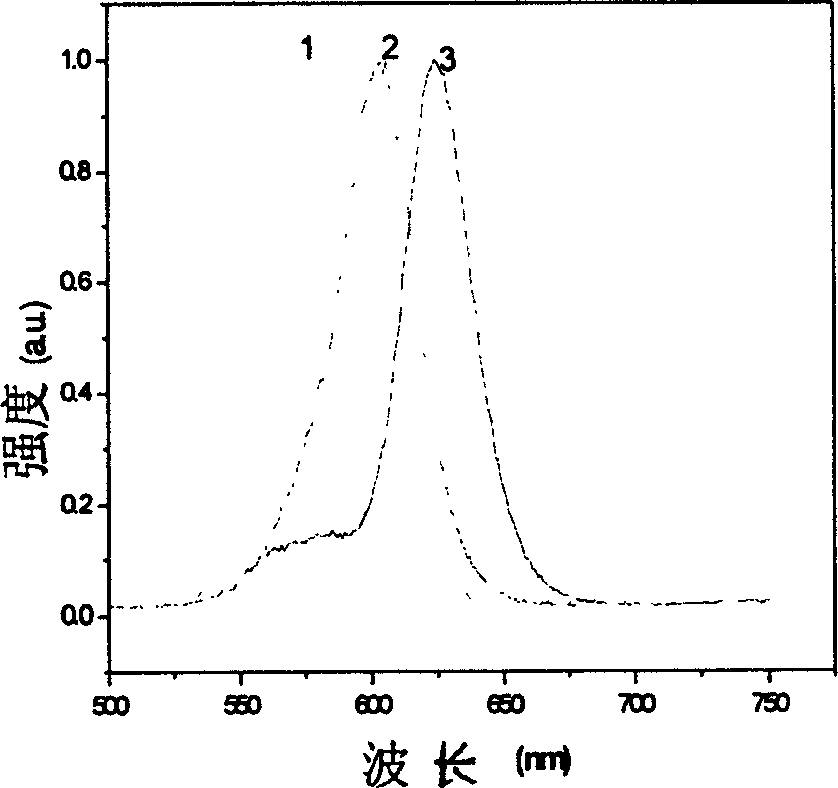Preparation method of CdSe nano-crystalline composite liposome microcapsule bubble used for fluorescence immunity detection
A nanocrystal composite, fluorescent nanocrystal technology, applied in the field of nanomaterials and biology, can solve the problems of limiting nanocrystal application, fluorescent nanocrystal and protein aggregation, fluorescent nanocrystal leakage, etc.
- Summary
- Abstract
- Description
- Claims
- Application Information
AI Technical Summary
Problems solved by technology
Method used
Image
Examples
Embodiment Construction
[0026] 1. Preparation of nanocrystals with CdSe / ZnSe core-shell structure
[0027] Select 99.9% CdO: 0.0128-0.0150g, Se powder: 0.079-0.158g, stearic acid: 0.114-0.328g.
[0028] Between 140-150°C, CdO reacts with stearic acid to generate cadmium stearate, then lower the reaction container of the product to room temperature, and add TOPO and HDA to the container at room temperature, and then remove the The temperature rises to 300-320°C. At this temperature, TOPSe is injected into the system. After injection, the temperature is rapidly lowered. The cooling range is 250-280°C. Different cooling times can obtain nanocrystals of different sizes, that is, nanocrystals with sizes ranging from 3 to 280°C can be obtained. 5nm nanocrystals. The fluorescent color of the crystal gradually red shifted with time, that is, gradually changed from green to red. Figure 1 shows the fluorescent spectra of different sizes synthesized under the above conditions. On the basis of synthesizing di...
PUM
| Property | Measurement | Unit |
|---|---|---|
| Size | aaaaa | aaaaa |
Abstract
Description
Claims
Application Information
 Login to View More
Login to View More - R&D
- Intellectual Property
- Life Sciences
- Materials
- Tech Scout
- Unparalleled Data Quality
- Higher Quality Content
- 60% Fewer Hallucinations
Browse by: Latest US Patents, China's latest patents, Technical Efficacy Thesaurus, Application Domain, Technology Topic, Popular Technical Reports.
© 2025 PatSnap. All rights reserved.Legal|Privacy policy|Modern Slavery Act Transparency Statement|Sitemap|About US| Contact US: help@patsnap.com



